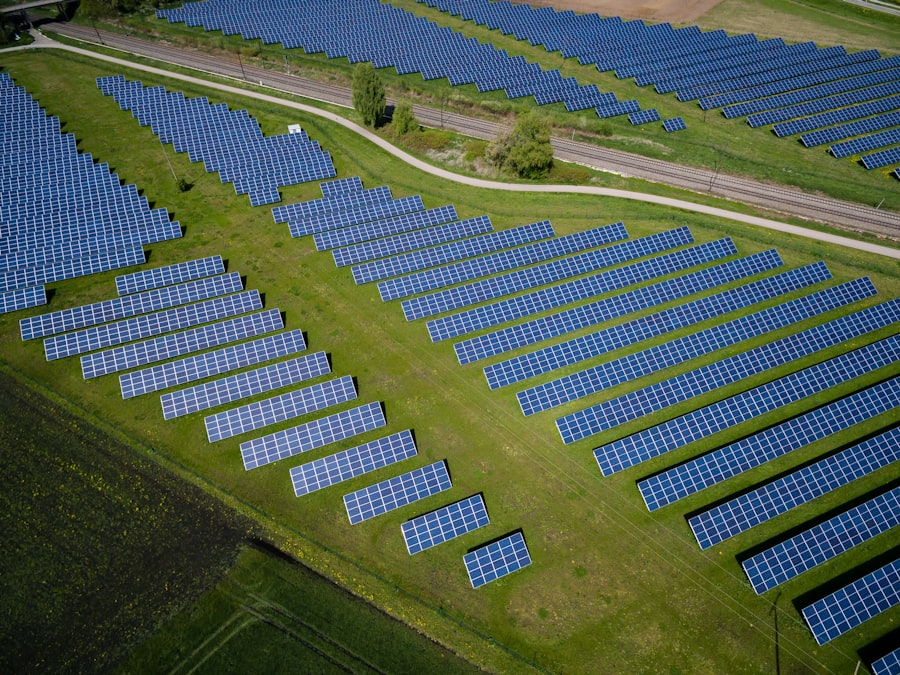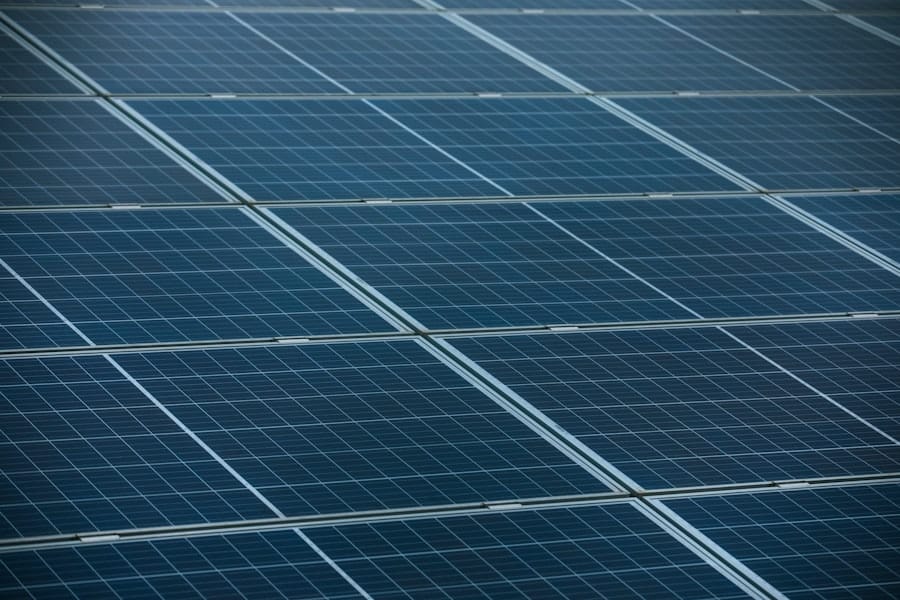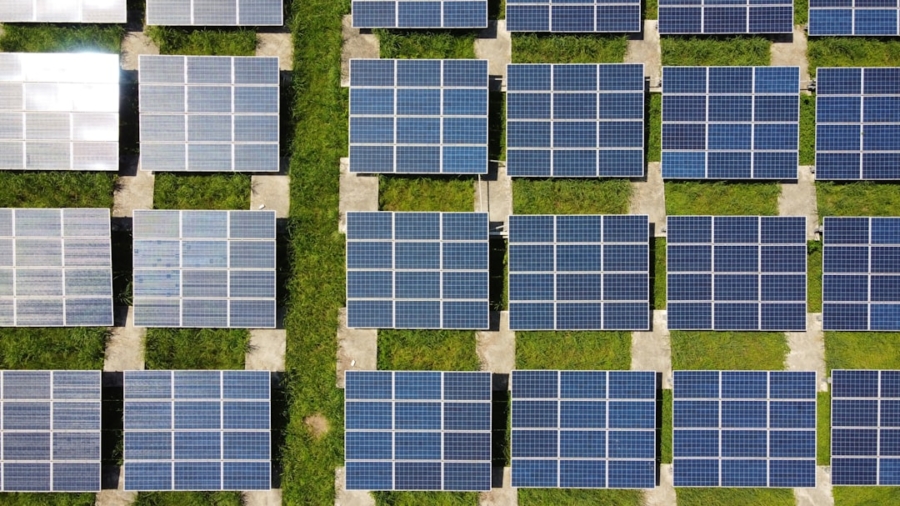The intersection of robotics and renewable energy represents a transformative frontier in both fields, promising to enhance efficiency, reduce costs, and accelerate the transition to sustainable energy sources. Robotics, defined as the branch of technology that deals with the design, construction, operation, and application of robots, has evolved significantly over the past few decades. As the world grapples with the pressing challenges of climate change and energy sustainability, the integration of robotic systems into renewable energy sectors such as solar, wind, and hydroelectric power is becoming increasingly vital.
This synergy not only optimizes energy production but also addresses labor shortages and safety concerns in hazardous environments. Renewable energy sources are pivotal in reducing greenhouse gas emissions and reliance on fossil fuels.
As these energy sources become more prevalent, the demand for innovative solutions to enhance their efficiency and reliability has surged. Robotics offers a promising avenue for addressing these needs, providing tools that can automate processes, monitor systems, and maintain equipment in ways that were previously unimaginable. The collaboration between robotics and renewable energy is not merely a trend; it is a necessary evolution in our approach to energy production and consumption.
Key Takeaways
- Robotics and renewable energy are two rapidly advancing fields that are increasingly being integrated to improve efficiency and sustainability.
- Current applications of robotics in renewable energy include maintenance and inspection of solar panels, wind turbines, and hydroelectric plants, as well as autonomous operation of renewable energy systems.
- Advancements in robotics technology for renewable energy include the development of specialized robots for tasks such as cleaning solar panels, optimizing wind turbine performance, and underwater inspection of offshore renewable energy installations.
- Challenges and limitations in integrating robotics with renewable energy include high initial costs, technological limitations, and the need for specialized training and maintenance.
- The potential impact of robotics on the efficiency of renewable energy solutions is significant, as robots can perform tasks more quickly, accurately, and safely than humans, leading to increased energy production and reduced downtime.
Current Applications of Robotics in Renewable Energy
Robotics is currently employed in various capacities within the renewable energy sector, showcasing its versatility and effectiveness. One prominent application is in the maintenance and inspection of wind turbines. Drones equipped with high-resolution cameras and sensors are increasingly used to conduct aerial inspections of turbine blades.
These drones can identify cracks, corrosion, or other structural issues that may compromise the integrity of the turbines. By utilizing drones for these inspections, operators can significantly reduce downtime and maintenance costs while enhancing safety by minimizing the need for technicians to work at heights. In the solar energy sector, robotics plays a crucial role in the installation and maintenance of solar panels.
Automated systems are being developed to streamline the installation process, allowing for faster deployment of solar farms. For instance, robotic arms can be programmed to position solar panels with precision, ensuring optimal angles for sunlight absorption. Additionally, robotic cleaning systems are being deployed to maintain the efficiency of solar panels by removing dust and debris that can hinder performance.
These applications not only improve operational efficiency but also contribute to the overall reduction of costs associated with solar energy production.
Advancements in Robotics Technology for Renewable Energy

The field of robotics is witnessing rapid advancements that are directly benefiting renewable energy applications. One significant development is the integration of artificial intelligence (AI) with robotic systems.
For example, AI-driven robots can learn from historical performance data to anticipate when a wind turbine may require maintenance, thereby preventing costly failures and optimizing energy output. Another notable advancement is the development of autonomous robots capable of operating in remote or hazardous environments. These robots are equipped with advanced navigation systems that allow them to traverse challenging terrains, such as offshore wind farms or mountainous solar installations.
Autonomous underwater vehicles (AUVs) are being utilized for underwater inspections of tidal turbines and submerged solar panels, providing insights that were previously difficult to obtain. The ability of these robots to operate independently not only enhances efficiency but also reduces the risks associated with human intervention in dangerous settings.
Challenges and Limitations in Integrating Robotics with Renewable Energy
Despite the promising applications and advancements in robotics for renewable energy, several challenges and limitations persist. One major hurdle is the high initial cost associated with deploying robotic systems. While the long-term benefits may outweigh these costs, many companies are hesitant to invest in new technologies without clear evidence of return on investment.
This financial barrier can slow down the adoption of robotics in renewable energy sectors, particularly among smaller companies or those operating on tight budgets. Additionally, there are technical challenges related to the reliability and robustness of robotic systems in harsh environmental conditions. Wind turbines and solar panels are often located in remote areas where extreme weather conditions can pose significant risks to robotic operations.
Ensuring that robots can withstand high winds, heavy rain, or extreme temperatures is crucial for their successful deployment. Furthermore, there is a need for standardization in robotic technologies across different renewable energy sectors to facilitate interoperability and ease of integration.
Potential Impact of Robotics on the Efficiency of Renewable Energy Solutions
The integration of robotics into renewable energy solutions has the potential to significantly enhance efficiency across various stages of energy production and management. By automating routine tasks such as inspections, maintenance, and cleaning, robotics can reduce human error and increase operational uptime. For instance, regular drone inspections of wind turbines can lead to early detection of issues that might otherwise result in prolonged outages or costly repairs.
This proactive approach not only maximizes energy output but also extends the lifespan of critical infrastructure. Moreover, robotics can optimize energy management systems by providing real-time data analytics that inform decision-making processes. Smart grids equipped with robotic monitoring systems can dynamically adjust energy distribution based on demand fluctuations or equipment performance metrics.
This level of responsiveness ensures that renewable energy sources are utilized efficiently, reducing waste and enhancing overall system reliability. As a result, the potential for increased efficiency through robotics could play a pivotal role in meeting global energy demands sustainably.
Future Trends and Developments in Robotics for Renewable Energy

The Rise of Collaborative Robots
One emerging trend is the increasing use of collaborative robots, or cobots, which are designed to work alongside human operators rather than replace them. In renewable energy settings, cobots could assist technicians in complex tasks such as equipment assembly or maintenance while ensuring safety and efficiency.
Sustainability in Robotics
Another trend is the growing emphasis on sustainability within robotics itself. As environmental concerns continue to rise, there is a push for developing eco-friendly robotic systems that minimize their carbon footprint during production and operation. Innovations such as biodegradable materials for robot construction or energy-efficient designs are gaining traction.
Advancements in Battery Technology
Additionally, advancements in battery technology may lead to longer-lasting robots that require less frequent charging or maintenance, further aligning with sustainability goals.
Ethical and Environmental Considerations in the Use of Robotics for Renewable Energy
The deployment of robotics in renewable energy raises important ethical and environmental considerations that must be addressed as these technologies evolve. One key concern is the potential displacement of human workers due to automation. While robotics can enhance efficiency and safety, there is a risk that widespread adoption could lead to job losses in certain sectors.
It is essential for policymakers and industry leaders to consider strategies for workforce retraining and upskilling to ensure that workers can transition into new roles created by technological advancements. Environmental considerations also play a crucial role in the ethical discourse surrounding robotics in renewable energy. The production and disposal of robotic systems must be managed responsibly to minimize ecological impact.
This includes evaluating the lifecycle of robotic components, from sourcing materials to end-of-life disposal or recycling options. As robotics becomes more integrated into renewable energy solutions, it is imperative that developers prioritize sustainable practices throughout the entire supply chain.
The Role of Robotics in Shaping the Future of Renewable Energy
As we navigate an era marked by climate change and an urgent need for sustainable energy solutions, robotics stands out as a key player in shaping the future of renewable energy. The current applications demonstrate how robotics can enhance efficiency and safety while addressing labor shortages within the sector. Advancements in technology continue to push boundaries, enabling more sophisticated robotic systems capable of operating autonomously in challenging environments.
However, challenges remain that must be addressed through collaboration among industry stakeholders, policymakers, and researchers. By fostering an environment conducive to innovation while considering ethical implications and environmental impacts, we can harness the full potential of robotics to drive progress in renewable energy solutions. The future promises exciting developments that will not only transform how we produce and consume energy but also contribute significantly to our collective goal of achieving a sustainable planet for generations to come.
In a recent article discussing the future of robotics in enhancing renewable energy solutions, it is important to consider the role of technology in advancing sustainability efforts. One related article that delves into the intersection of technology and innovation is “New World of Possibilities with the Samsung Galaxy Chromebook 2 360”. This article explores how cutting-edge devices like the Samsung Galaxy Chromebook 2 360 are opening up new opportunities for creativity and productivity in various fields, including renewable energy research and development. By leveraging the power of technology, we can continue to push the boundaries of what is possible in the quest for a more sustainable future.
FAQs
What is the future of robotics in enhancing renewable energy solutions?
The future of robotics in enhancing renewable energy solutions involves the development and implementation of advanced robotic technologies to improve the efficiency, reliability, and cost-effectiveness of renewable energy systems.
How can robotics enhance the maintenance and operation of renewable energy infrastructure?
Robotics can enhance the maintenance and operation of renewable energy infrastructure by performing tasks such as inspection, cleaning, and repairs in hard-to-reach or hazardous environments, ultimately reducing downtime and increasing overall system performance.
What are some examples of robotics being used in the renewable energy industry?
Examples of robotics being used in the renewable energy industry include autonomous drones for inspecting solar panels and wind turbines, robotic arms for cleaning and maintaining solar arrays, and underwater robots for inspecting and repairing offshore wind turbines.
What are the potential benefits of integrating robotics into renewable energy solutions?
The potential benefits of integrating robotics into renewable energy solutions include increased energy production, reduced maintenance costs, improved safety for workers, and the ability to access and maintain remote or challenging environments.
What are some challenges in the integration of robotics into renewable energy solutions?
Challenges in the integration of robotics into renewable energy solutions include the development of specialized robotic technologies for different types of renewable energy systems, ensuring compatibility with existing infrastructure, and addressing concerns about job displacement.

